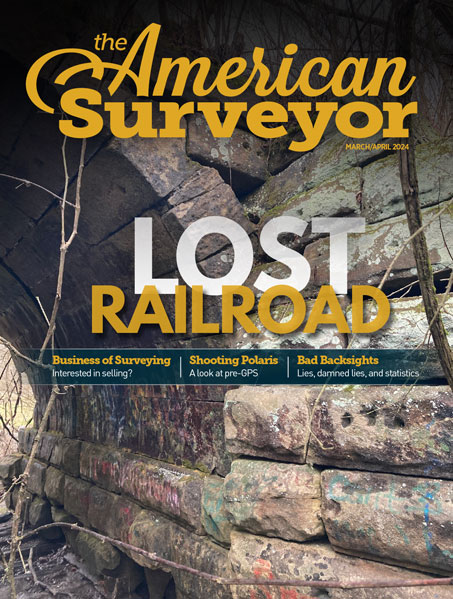 Hudson, NH — The Illustrated Reference Guide to Cemetery Mapping Techniques and Applications by Robert “Bob” Perry, a specialist in cemetery geophysics, has recently been released. “This reference guide aims to provide information for anyone interested in mapping cemeteries and computerizing cemetery information at a fraction of the cost of hiring a professional service provider like myself,” the guide reads, adding that it’s also “a jumping-off place” for individuals interested in becoming service providers.
Hudson, NH — The Illustrated Reference Guide to Cemetery Mapping Techniques and Applications by Robert “Bob” Perry, a specialist in cemetery geophysics, has recently been released. “This reference guide aims to provide information for anyone interested in mapping cemeteries and computerizing cemetery information at a fraction of the cost of hiring a professional service provider like myself,” the guide reads, adding that it’s also “a jumping-off place” for individuals interested in becoming service providers.
The guide is a how-to manual for mapping cemeteries and locating unmarked graves. “The book contains everything they need to know, including explaining the software, equipment, and everything else they’ll need,” says Bob.
Thousands of cemeteries across the U.S. and Canada require cemetery mapping services, but are unable to afford the expenses associated with hiring a professional. Many simply don’t feel that they could afford the cemetery management software, which costs thousands of dollars and requires continued licensing for continued use. “Although professional mapping services and cemetery management software have their place, there are other alternatives and more cost-effective ways to map cemeteries and computerize burial records,” the book reads.
“A lot of companies use a GIS application, which is good for data management, but not detailed enough to do it,” Bob says. Instead, he recommends CorelDRAW, an easy-to-learn system that has the capability to save files to AutoCAD, which is often used by municipalities.
“This book aims to provide the reader with a hands-on approach to field mapping a cemetery. A kind of do-it-yourself way for turning notes and hand-drafted maps into digital drawings that a computer can update. The process combines both field-mapping techniques and learning the basics of the mapping software that I use every day in my business,” the introduction reads.
Bob, at age 76, says he can’t service all of the projects that he receives calls for, which is one of the reasons he wrote the book. As a one-person operation, he says he takes on around fifteen projects per year, even though he receives calls from thirty to forty cemeteries. He has over 350 clients across the country that he’s worked with.
It took Bob about eight years to write the book, but really it was less than two years of actual writing, as he could only work on it in the winter. “I only wrote during the winter months. Otherwise, I was working, making a living.
Bob got the nickname the Bone Finder through his extensive experience within the media. He’s been in forty to fifty newspaper articles, the History Channel, the Travel Channel, and Destination America. He’s worked with law enforcement, for homicide victims, and in paranormal investigations.
Before writing the book, Bob looked around for a book specifically written on how to map a cemetery. He found books on land surveying, mapping, and cemetery histories as well as books on researching and transcribing old headstones. But nothing on mapping a cemetery.
“Seeing the lack of published information available, I tested the feasibility of creating such a book through my website. I created a page titled Cemetery Mapping – Techniques and Application. During the first year, I received many requests for a book that I hadn’t started writing yet, except for formulating an outline of the subjects to be covered,” Bob says in his book.
After writing the book, Bob printed one hundred copies to test how sales would be. He had the copies printed in November of 2022 and by mid-December, he had sold out. He’s had over 300 requests on his website for individuals interested in purchasing the book.
The Illustrated Reference Guide to Cemetery Mapping Techniques and Applications will eventually be available in two formats. The first format, which is currently available through the website, is a field manual. It is wire-bound and can be laid down flat on a headstone to read procedures. It has fold-out maps that show you what the maps should look like when complete. The second format, which is not yet available, is the exact same book with page size maps, but is perfect-bound. It is a coffee table book for display and use in the office and will be available through bookstores and Amazon. For more information, visit Bob’s website at www.topographix.com. You can also do a search on the internet for Bob Perry Bone Finder
